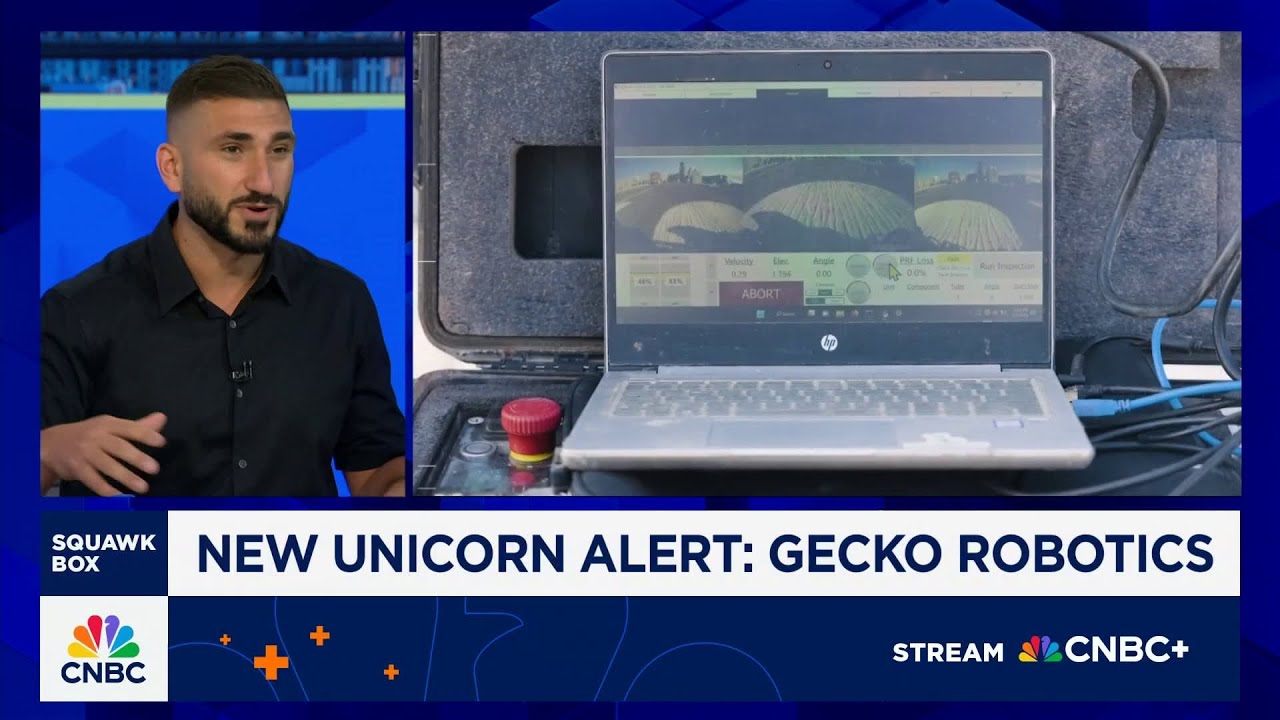Gekko Robotics uses AI-powered climbing robots to inspect and gather detailed data on critical infrastructure, enabling proactive maintenance and improved safety. With a valuation of $1.25 billion, the company leverages this data through its Cantilever platform to help industries like energy, manufacturing, and defense extend asset lifespans and enhance infrastructure resilience.
The video features CNBC’s Julia Boorstin discussing Gekko Robotics, a company ranked at number 30 on the 2025 Disruptor 50 list. Gekko Robotics specializes in using AI-powered robots that can climb and inspect critical infrastructure such as wind turbines, nuclear power plants, ships, bridges, and refineries. These robots gather detailed data on the condition of these assets, helping to assess their health and readiness for repairs. The company’s innovative approach combines robotics and AI to improve infrastructure maintenance, safety, and longevity, positioning it at the intersection of defense, infrastructure, and technology sectors.
Gekko Robotics recently secured a new funding round, which doubled its valuation to $1.25 billion. The company plans to use this capital to expand its resources and accelerate growth in vital industries like energy, manufacturing, and defense. Co-founder and CEO Jake Lucero explains that the company’s strategy revolves around not just building robots but leveraging the data they collect to power a proprietary software platform called Cantilever. This platform enables clients to make better-informed decisions about infrastructure management and repairs, creating a competitive advantage through data-driven insights.
The company has expanded partnerships with major entities such as the U.S. Navy and L3 Harris, demonstrating its capacity to scale operations and meet increasing demand. Lucero emphasizes that Gekko’s robots are designed to collect “unfair data” that provides unique insights into the structural integrity of assets. This data is used to extend the lifespan of aging infrastructure, such as power grids, and optimize existing power plants without the need for new construction. The company’s work aims to improve infrastructure resilience and efficiency, especially in sectors where aging assets pose significant risks.
A key aspect of Gekko’s approach is its focus on creating detailed digital twins of physical assets. By accurately representing real-world structures in digital form, the company helps clients visualize and analyze their infrastructure more effectively. This digital representation supports decision-making, maintenance planning, and even insurance underwriting, as the extensive data collected can inform risk assessments and liability evaluations. Lucero notes that the company’s data sets are highly valuable, especially for insurance companies seeking better ways to evaluate and manage risks associated with critical assets.
Throughout the interview, Boorstin highlights the uniqueness of Gekko’s integration of robotics, AI, and infrastructure management. She underscores that the company’s mission is driven by a desire to improve safety, reduce costs, and enable proactive repairs rather than reactive fixes. The company’s innovative use of AI and data collection aims to transform how critical infrastructure is maintained and operated, ultimately making industries safer and more efficient. Lucero concludes by emphasizing that Gekko’s technology is about gathering unprecedented data to build smarter, more resilient infrastructure for the future.
